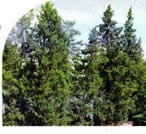How to Use in Palm Trees
For the correct use of the injection proceed as follows
1. Bore a hole in the trunk with an inclination downwards using a drill with a metal bit of 7 mm of diameter and a length of between 25 to 50 cm. Insert and take out the bit 2 or 3 times to leave the hole clean, this hole must reach the centre of the tree where the most active vascular system is located. The holes must be at different levels and evenly distributed around the tree (each at 20 to 25cm) and all of them at least at 2 to 2.5m fromf the crown of leaves or at the longest distance possible.
2. Insert the connector in the hole until it is perfectly adjusted, this can be done pushing with the fingers and a light blow with a nylon hammer. There must be at least a distance of 1 cm from the head of the connector to the bark.
3. Press with your fiingers, or with a pair of tweezers, the longest extreme of the injection below the metalic closer and cut with a pair of scissors between the pressure point and the metalic closer. Connect the extreme of the injection to the head of the connector and let it hang loose until it is totally absorbed, this can take from minutes to a few hours. It is advisable to let it inside the protective bag to avoid breakage for the exposition to the sun or external agents.
4. When the injections have been absorbed apply Mastic or any other product to seal the hole and allow the healing of the tree, this is the only case that is necessary to do this because palm trees have only primary growing, and do not produce healing tissue.

TREATING CONIFERS
The direct injection to the trunk of the tree puts the product in the exact place where the insect and fungus feed (trunk, branches, acicular leaves and flaky leaves) allowing the control of the plague. This system does not damage the environment and can be characterized as follows.
A. It is advisable to apply from February to the beginning of Autumn.
B. Regarding its location and the distribution in the trunk, there must be more than a meter between the place of the injection and the cross of the tree to allow an even distribution of the product before it reaches the tissue where the larvas and fungus are.
The injections must be given around the perimeter of the trunk, respecting the distances indicated in the label to avoid overdose, and drilling the holes at different heights, that is to say avoiding the horizontal line.
Tips for treating Pines
According to the time of the year, specie and sanitary condition of the pine to be treated, the amount and production of resin coming out of the tree could provoke some difficulties in the absorption process, and then it is advisable to follow these recommendations
1. Try first on only one tree, on a sunny day at noon.
Observe during that day and the following one if there have been ruptures due to the resin or if the absorption is normal.
If there are no problems with the first tree, treat the rest. In this way unnecessary waste of the product is avoided. Do not carry out the treatment on rainy, cloudy or humid days.
2. It is better to drill deeper holes to go through resin canals and avoid the most active ones.
3. If after following this instruction the tree still has absorption problems, another option could be to insert only the connectors without the injection and let the resin drain for several days until the resin stops coming out. Clean the connector of the resin or use new ones.
4. Most of these problems can be avoided if the treatment is performed at the end of Winter when there is less production of resin, and this gives the product enough time to be distributed in all the tree at the beginning of Spring when the insects and fungus are more active.
5. There might be a case of a tree that does not absorb the product, this hardly ever happens and the number of such cases is statistically irrelevant.
